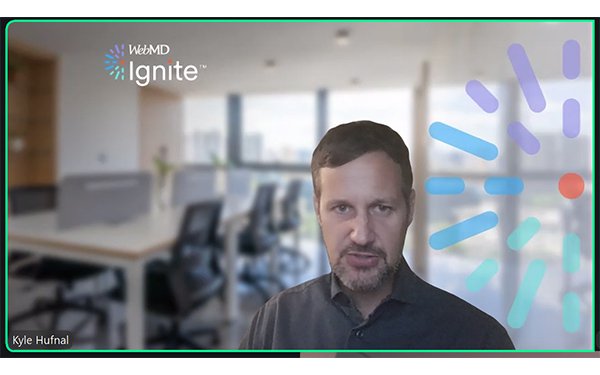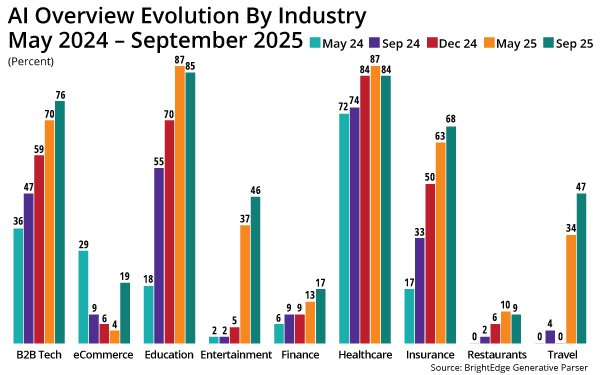
The way we search for healthcare information has changed, and marketers
in the industry increasingly feel the impact. Data shows that a high percentage -- more than 80% -- of health-related searches on Google now trigger AI Overviews (AIO), compared to just between 13%
and 16% of searches overall.
Since the rollout of AIO, healthcare has dominated citations by 87%, according to BrightEdge, an enterprise SEO and content performance platform
company.

This increase in citations
has become a major challenge for healthcare marketers, especially when patients go to their AI-based search engine to look for answers rather than a company's website or through doctors.
Google is "protecting" commercial queries while pushing informational content to AIO users, according to BrightEdge.
advertisement
advertisement
Queries like "what is" and "how does" are the top queries related to
medical definitions and symptoms. Technical documentation, educational content, and research comparisons follow. These are typically answered in the query.
WebMD Ignite, the company's
healthcare agency, notes that AIO coverage in healthcare jumped 116% in just two months this spring, and when these AI summaries appear, click-through rates for paid and organic listings plummeted by
between 50% and 80%.
For healthcare marketers like hospitals and health insurers that have long depended on SEM-driven customer acquisitions, the funnel is breaking down or even
collapsing.
A BrightEdge spokesperson told MediaPost that healthcare subcategories with 100% AI Overview adoption share three traits: high informational value, low commercial intent, and
specialized expertise required.
WebMD Ignite Vice President of Activation Kyle Hufnal sees this change in real time, as company’s reps work with approximately half of all healthcare
providers such as U.S. hospitals and many of the top health insurers across the country to ease this transition.
“Paid search has always been foundational to any omnichannel mix
because it tends to be inexpensive and effective, and good at driving customers from search engines to websites,” Hufnal said. “What’s changed in the past year is the induction of
AIOs and AI-driven search engine results. It started small, but in healthcare ramped up to the point that it has taken over and impacted paid search for marketing.”
The WebMD Ignite
division, which acts like a healthcare agency, helps organizations adapt to an AI-first strategy. Hufnal believes that patients using AIO and other AI-based search engines more often healthcare
marketers need something different.
Why? AIO tries to predict what people search for from queries. Search analyzes intent, serves links, and then redirects the person querying information.
“Google uses AI to read the market,” he said. “The information gets served in results and the person does not have to click off Google, which has led to zero-click searches.
It’s not to say there are no longer any clicks, but there’s a tendency not to do so. It’s been a challenge for healthcare and many industries.”
There are still ways to
use paid search effectively, he said. Most people start their search journey in Microsoft Bing or Google Search by searching for broader keywords like general symptoms and phrases, along with
treatment options. Hufnal called these “beginning of search answers."
“What’s still valuable in search are the immediate need answers, like lower in the funnel,” he
said. “Like trying to find a hospital or doctor near me. When they need immediate action.”
Marketers should shift away from upper-funnel-type keywords and optimize paid-search
campaigns away from where AIO dominates and focus on where it is not. Hufnal said there are still opportunities there.
Advertisers should use paid search as a tool, but not rely heavily on it.
“We can still generate quality traffic, but cannot rely on it exclusively,” he said. “We are telling out clients to broaden the mix of marketing and add channels like connect
TV.”
It's not a matter of shifting away from click-based attribution, but rather redefining key performance indicators (KPIs) and exploring new channels like connected TV (CTV),
audio, and digital out-of-home (DOOH).
Broadening the channels will help to maintain visibility and trust across the web. It's important to build brand awareness before conducting some of
these searches.